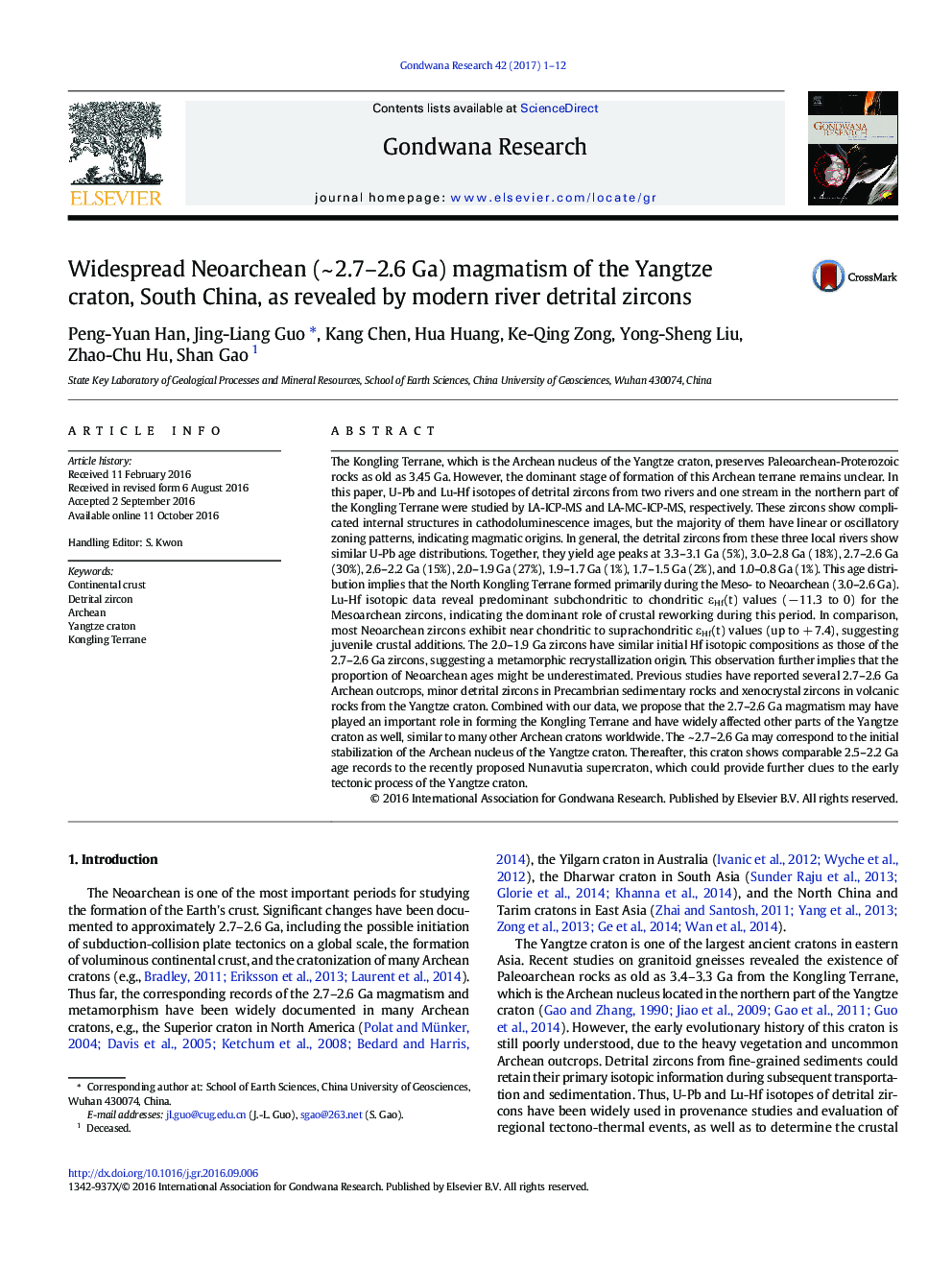| کد مقاله | کد نشریه | سال انتشار | مقاله انگلیسی | نسخه تمام متن |
|---|---|---|---|---|
| 4726532 | 1640129 | 2017 | 12 صفحه PDF | دانلود رایگان |
• River detrital zircons reveal the formation history of the North Kongling Terrane.
• The 2.7–2.6 Ga magmatism formed most of the granitic crust in this terrane.
• The coeval tectono-thermal event(s) was also widespread in Yangtze.
• The event may correspond to the initial stabilization of the Yangtze craton.
The Kongling Terrane, which is the Archean nucleus of the Yangtze craton, preserves Paleoarchean-Proterozoic rocks as old as 3.45 Ga. However, the dominant stage of formation of this Archean terrane remains unclear. In this paper, U-Pb and Lu-Hf isotopes of detrital zircons from two rivers and one stream in the northern part of the Kongling Terrane were studied by LA-ICP-MS and LA-MC-ICP-MS, respectively. These zircons show complicated internal structures in cathodoluminescence images, but the majority of them have linear or oscillatory zoning patterns, indicating magmatic origins. In general, the detrital zircons from these three local rivers show similar U-Pb age distributions. Together, they yield age peaks at 3.3–3.1 Ga (5%), 3.0–2.8 Ga (18%), 2.7–2.6 Ga (30%), 2.6–2.2 Ga (15%), 2.0–1.9 Ga (27%), 1.9–1.7 Ga (1%), 1.7–1.5 Ga (2%), and 1.0–0.8 Ga (1%). This age distribution implies that the North Kongling Terrane formed primarily during the Meso- to Neoarchean (3.0–2.6 Ga). Lu-Hf isotopic data reveal predominant subchondritic to chondritic εHf(t) values (− 11.3 to 0) for the Mesoarchean zircons, indicating the dominant role of crustal reworking during this period. In comparison, most Neoarchean zircons exhibit near chondritic to suprachondritic εHf(t) values (up to + 7.4), suggesting juvenile crustal additions. The 2.0–1.9 Ga zircons have similar initial Hf isotopic compositions as those of the 2.7–2.6 Ga zircons, suggesting a metamorphic recrystallization origin. This observation further implies that the proportion of Neoarchean ages might be underestimated. Previous studies have reported several 2.7–2.6 Ga Archean outcrops, minor detrital zircons in Precambrian sedimentary rocks and xenocrystal zircons in volcanic rocks from the Yangtze craton. Combined with our data, we propose that the 2.7–2.6 Ga magmatism may have played an important role in forming the Kongling Terrane and have widely affected other parts of the Yangtze craton as well, similar to many other Archean cratons worldwide. The ~ 2.7–2.6 Ga may correspond to the initial stabilization of the Archean nucleus of the Yangtze craton. Thereafter, this craton shows comparable 2.5–2.2 Ga age records to the recently proposed Nunavutia supercraton, which could provide further clues to the early tectonic process of the Yangtze craton.
Figure optionsDownload as PowerPoint slide
Journal: Gondwana Research - Volume 42, February 2017, Pages 1–12
